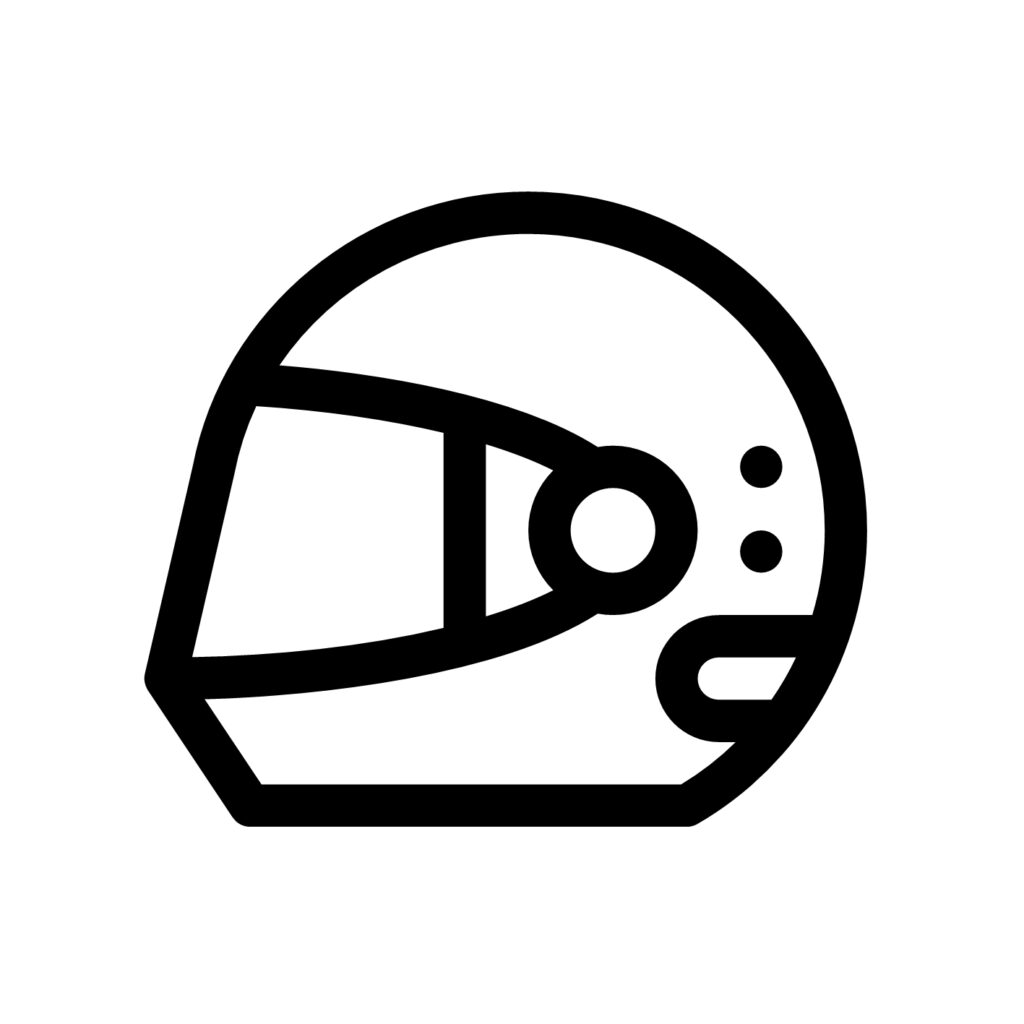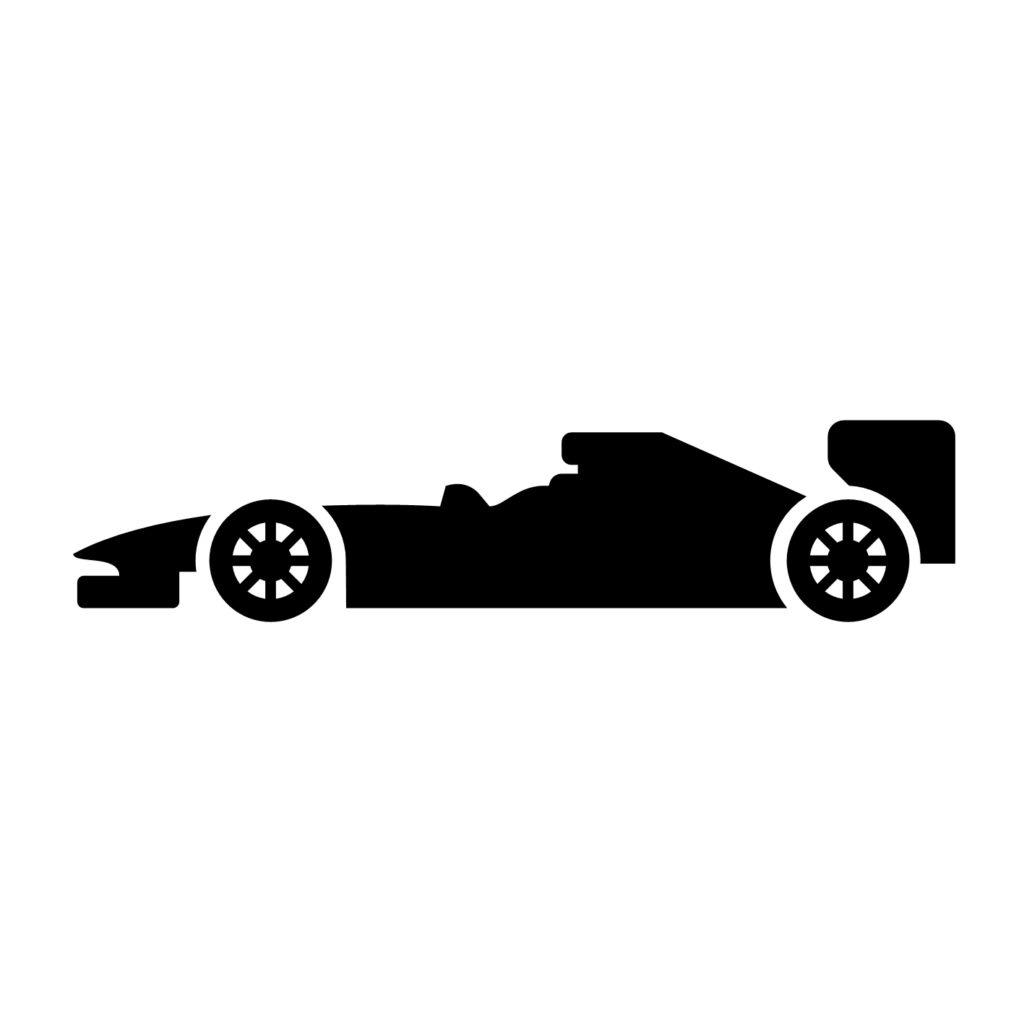Mastering the flowing nature of Suzuka requires an enormous attention to detail. The only figure of eight circuit on Formula 1’s calendar is regarded as one of the most technically challenging of the year.
| FIRST F1 RACE | 1987 |
| TRACK LENGTH | 3.608 miles |
| NUMBER OF LAPS | 53 |
| NUMBER OF TURNS | 18 |
| MOST POLES | Michael Schumacher (8) |
| MOST WINS | Michael Schumacher (6) |
The Suzuka circuit was built as a test track for Japanese manufacturer Honda in 1962. The circuit, which was designed by John Hugenholtz, is situated 30 miles south-west of Nagoya. While Honda tested their latest motorbikes and cars, the track was seen as too good to be used only for testing, and so racing began at the circuit. For its first years of existence, the track was used only for national events. Formula 1 ventured into Japan in the mid-seventies with a couple of races at Fuji, before the death of a marshal in the 1977 race put a halt to the sport’s tenure there. Suzuka was finally placed on the calendar in 1987.
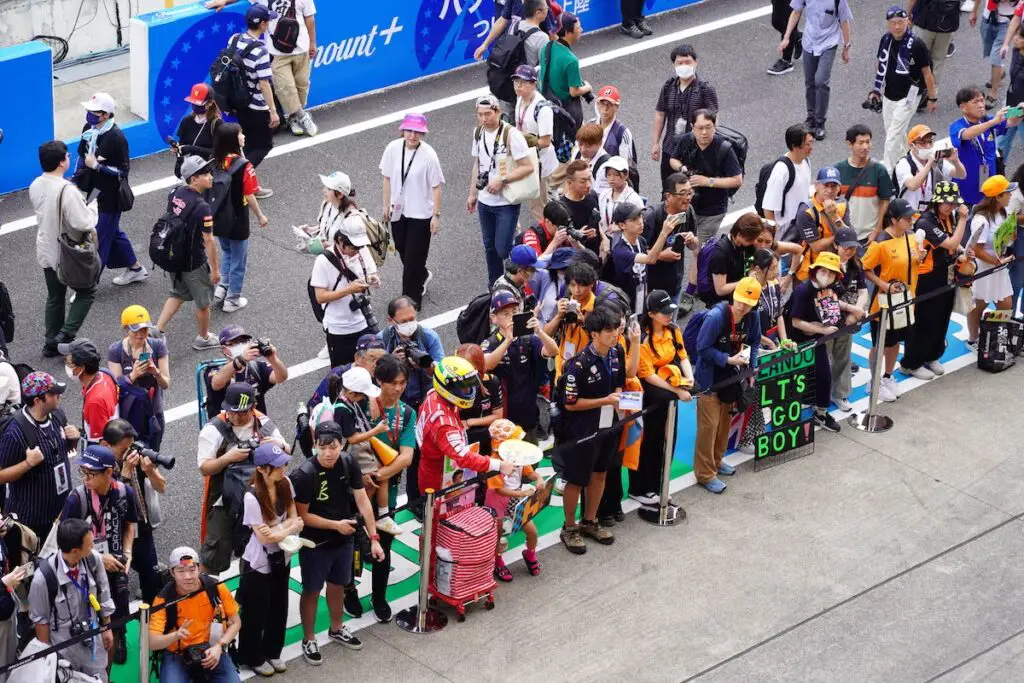
The elevation change around the track is one of the factors which makes Suzuka such a demanding track. The drivers travel downhill into the long first bend, before ascending up through the esses. Near the end of the track – after the drivers have passed over the circuit in the only figure of eight layout on the calendar – the drivers hurtle into 130R, which is one of the fastest corners of the year, taken at just under 190mph, before the cars approach the final chicane – the slowest section of the track.
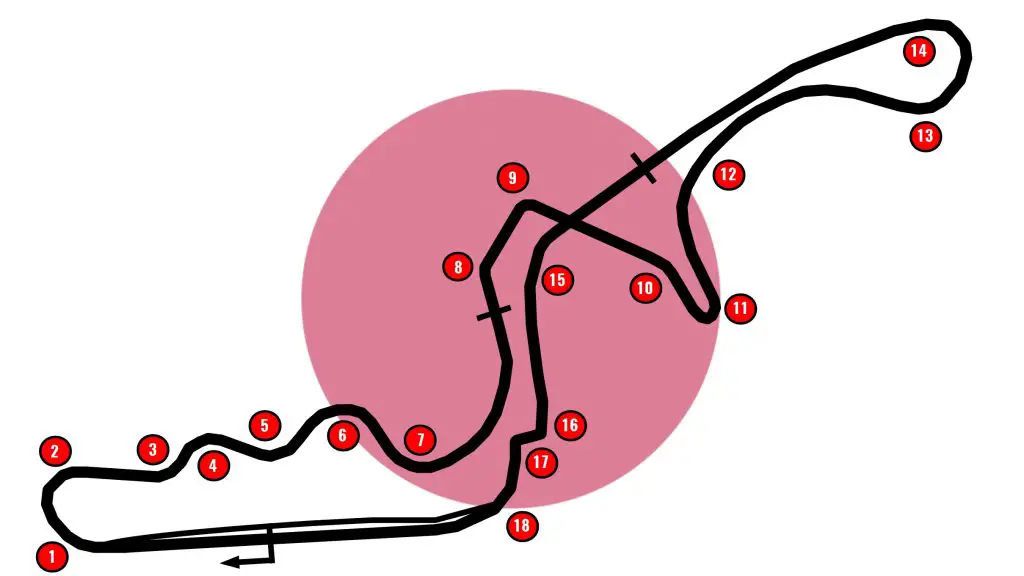
The circuit has changed very little over the past thirty years, with just a few modifications. A chicane was added in 1983, before Formula 1 arrived, to slow cars down into the final corner. Additional safety barriers were also added around the track for more general safety standards. The Degner curve was also made into two corners instead of one long bend at this time too. It wasn’t until the turn of the new millennium that the track was changed again, with the chicane and 130R being slightly re-profiled in 2002, before more changes moved the chicane closer to 130R the following year.
In March 2006, it was announced that the Japanese Grand Prix would move from Suzuka back to its original venue, Fuji. The race was held there for 2007 and 2008, before being scheduled to alternate between Fuji and Suzuka for future seasons. The Grand Prix was scheduled to run at Fuji in 2010, but in early 2009, Toyota, who now owned the circuit, announced they would no longer hold the race due to the global economic slump. The Suzuka circuit closed for a year in 2008 when work was carried out to bring it back up to F1 standards after a three year absence from the calendar. The race has remained at Suzuka every year since 2009.
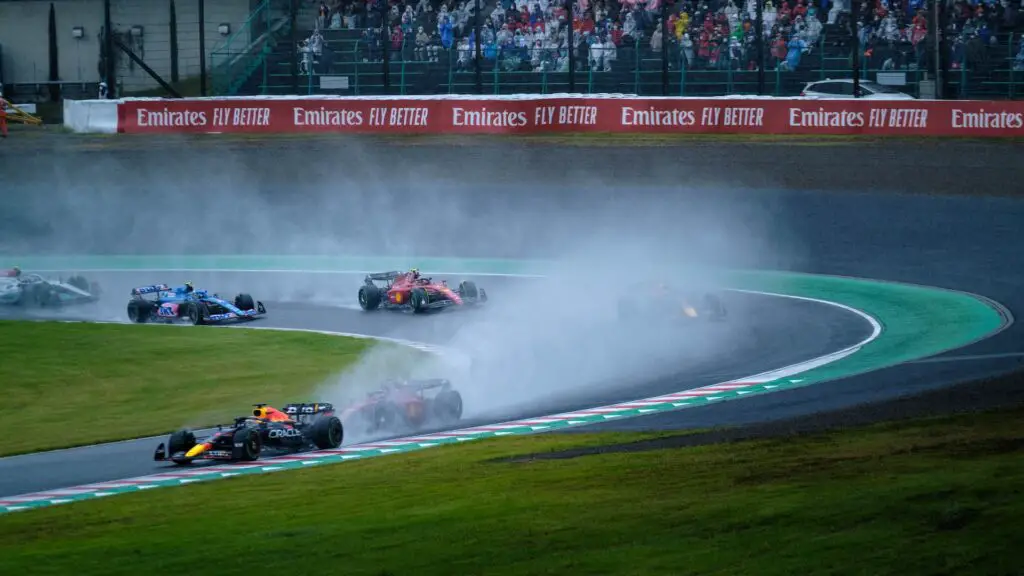
Many championships have been decided at Suzuka over the years, due to it being close to the end of the season. The track is most famous for hosting the thrilling conclusions to one of the sport’s most memorable rivalries – Alain Prost and Ayrton Senna, who collided here twice in consecutive years. Most recently, Max Verstappen won his second title here in 2022.
Suzuka has seen its fair share of tragedy over the years, with 19 lives lost at the circuit since it was built. The most recent, and only Formula 1 fatality at this track, was in 2014, when the popular Jules Bianchi collided with a recovery vehicle. A raft of changes have been made to the sport’s cockpit protection and recovery procedures since the Frenchman’s passing.
At the end of August 2018, the race organisers signed a new contract to keep Suzuka on the F1 calendar as the host of the Japanese Grand Prix until 2021. The deal was extended through to 2024 in April 2021. Both the 2020 and 2021 Japanese Grands Prix were cancelled amid the coronavirus pandemic.
LEARN MORE ABOUT SUZUKA
SUZUKA FAST FACTS
- A Honda powered car has only won on two occasions in F1 at Suzuka – Ayrton Senna in 1988 and Gerhard Berger in 1991.
- The F1 Drivers’ Championship has been settled at this track 12 times, more than any other circuit.
- Kimi Raikkonen won from 17th on the grid here in 2005 – only two Grands Prix in the history of F1 have been won from further back.
- The track has a maximum capacity of 155,000.
- There’s a theme park located on the same site as the Suzuka circuit, hence why you can clearly see a large Ferris Wheel and rollercoaster adjacent to the pit straight.
- The track is one of the most narrow on the calendar, making overtaking a challenge.
- In 1990 three million fans entered a draw to become one of 120,000 ticket holders for the Grand Prix. This was at the height Honda’s success as an engine supplier, and due to the fact that Japan had a driver in F1 for the first time.
- Until 2009, every Grand Prix held at Suzuka was sponsored by Fuji Television.
- The Degner curves are named after Ernst Degner, who crashed at the corner in the circuit’s opening year. He survived the crash, despite suffering terrible burns.
- Due to its location, severe weather is sometimes an issue here, with typhoons interrupting on-track action on numerous occasions.
2023 JAPANESE GRAND PRIX RECAP
Verstappen clinched the victory and a sixth Constructors’ Championship win for Red Bull at the 2023 Japanese Grand Prix, as both McLaren drivers finished on the podium.
While Pierre Gasly crashed out in Free Practice 2 at Suzuka, Logan Sargeant brought out the red flags in Q1 at the 2023 Japanese Grand Prix as he crashed heavily at the final corner. Max Verstappen dominated on Saturday, setting the fastest lap time by over half a second. The two McLarens lined up behind him on the grid, with Oscar Piastri second and Lando Norris third.
The trio were three-wide on the run into Turn 1 but Verstappen was able to stay ahead. Further back, there was big contact in the mid-pack before Turn 1. The contact between Alex Albon and an Alfa Romeo brought out the Safety Car. There was more trouble for Alfa Romeo up at the hairpin, where Valtteri Bottas went off track after being hit by Sargeant’s Williams. Bottas retired from the race soon after.
The two Mercedes drivers battled for position when racing resumed, with both running off track multiple times. Meanwhile, Sergio Perez hit Kevin Magnussen’s Haas at the hairpin. The Red Bull subsequently retired from the race only to re-emerge a few laps later to serve the penalty which he had received for the earlier contact, before retiring again five minutes later.
Lewis Hamilton pulled off a move on Fernando Alonso at 130R. Towards the front, McLaren team-mates Norris and Piastri swapped positions, with Norris showing more pace than his rookie team-mate. There was more intra-team swapping at Mercedes, as Russell was told to let Hamilton by. It was a move which saw Carlos Sainz soon overtake Russell for P7.
Verstappen cruised to his 48th career victory – a win which sealed a sixth Constructors’ Championship win for Red Bull. McLaren recorded their first double podium finish at Suzuka since 2003, with Norris as runner-up and Piastri recording the first podium finish of his career.
2022 JAPANESE GRAND PRIX RECAP
Rain-soaked Suzuka hosted Formula 1 for the first time in three years and Verstappen claimed his second World Championship in a shortened Japanese Grand Prix.
Aquaplaning was an issue in opening practice for a wet Japanese Grand Prix weekend. Mick Schumacher crashed on his way back to the garage in the closing moments of the session. Fernando Alonso was fastest in the first on-track running at Suzuka in three years, while Mercedes topped the timesheets in Free Practice 2 – a session in which Nicholas Latifi mistook an access road for the track.
Weather conditions were drier on Saturday and it was Max Verstappen who set the pace in both final practice and qualifying. That was despite the Dutchman encountering a near-miss with Lando Norris when the McLaren driver was setting a fast lap. Sebastian Vettel impressed, reaching Q3 with Aston Martin on his final Suzuka outing.
More rain came on Sunday, with the Grand Prix starting in wet conditions. Verstappen led away at the front but there was chaos behind in the torrential conditions. First, Vettel found himself running through the gravel at Turn 1. Then, Carlos Sainz crashed later on Lap 1 and was lucky not to be collected by other oncoming cars. The Safety Car was deployed and the race was subsequently red-flagged for over two hours. Alex Albon also came to a stop on the opening lap, while Pierre Gasly was far from impressed after driving past a recovery vehicle unannounced on the circuit.
Racing finally resumed with just under 40 minutes remaining on the clock. Vettel and Latifi stopped for intermediate tyres as the race restarted, with the frontrunners following them in on the next lap. That left Fernando Alonso leading the race for a lap. Mick Schumacher almost led a lap too, but was overtaken on the line by the already-pitted Verstappen.
Schumacher plummeted down the order as those on intermediates caught up with the Haas. The Mercedes men were on the move, with both George Russell and Lewis Hamilton making up places with some textbook overtaking moves. Hamilton almost made contact with Esteban Ocon’s Alpine through 130R.
Verstappen dominated the race, winning the 28-lap race by over 27 seconds. On the final lap, third-placed Sergio Perez had caught Charles Leclerc in second. Despite some wheel-to-wheel action, Perez was unable to pass on track. However, Leclerc ran off track at the final chicane and was handed a post-race penalty for the incident, making it a Red Bull 1-2.
There was some confusion after the race over how many points would be awarded. As many had expected half points to be awarded for the shortened race, it was believed that Verstappen would be unable to win the title at Suzuka. However, the wording of the regulations – updated in 2022 – allowed full points to be awarded and Verstappen had done enough to clinch his second World Championship.
2019 JAPANESE GRAND PRIX RECAP
While Typhoon Hagibis affected the Suzuka schedule, Ferrari locked out the front row in Sunday qualifying, before Valtteri Bottas won and ensured the destiny of the 2019 championships in Mercedes’ favour.
The onset of Typhoon Hagibis led to an unusual Japanese Grand Prix weekend, with Saturday’s running cancelled and qualifying moved to Sunday morning. The weather was dry when qualifying finally began, but that didn’t prevent two Red Flag periods in Q1. The first was a result of Robert Kubica hitting the wall on the main straight in the Williams, and the second was for Kevin Magnussen who crashed in the same place.
Ferrari locked-out the front row, with Sebastian Vettel starting from pole position. Vettel made a poor start, and Valtteri Bottas swooped around both Ferrari drivers to take the lead. Charles Leclerc collided with Max Verstappen, sending the Red Bull driver into a spin. With damage flying from Leclerc’s car, he was called in to pit and the pair did battle again after they had both pitted.
Verstappen ultimately retired from the race, while his team-mate Alex Albon made an ambitious move on Lando Norris into the final chicane. As the race reached half distance, Lewis Hamilton questioned how he was so far down on the leading pair of Bottas and Vettel.
After the pit stops, Hamilton was on Vettel’s tail. He attempted an overtake at the first turn, but stayed behind the Ferrari. Sergio Perez crashed out of a points-paying position on the final lap – or at least he would have done, if the chequered flag had not been shown a lap early. Bottas won the race, with Vettel and Hamilton completing the podium. The result ensured that Mercedes would win a sixth consecutive Constructors’ Championship, and also ensured that the 2019 World Champion would be either Hamilton or Bottas.
2018 JAPANESE GRAND PRIX RECAP
Lewis Hamilton took pole and the win and strengthened his grip on a fifth title as Ferrari had another blunder-filled weekend.
A crash for Marcus Ericsson in Q1 saw him starting from the back of the grid, while Toro Rosso impressed with sixth and seventh on the grid. Daniel Ricciardo was eliminated in Q2 with power unit issues, and Q3 saw Lewis Hamilton take his 70th pole position. The final qualifying session saw rain fall half way through the session, voiding the drivers’ final qualifying attempts.
The top positions remained unchanged for most of the first lap. Vettel, who had qualified down in ninth, had made his way up to fifth. An error at the chicane from Max Verstappen in third, allowed Kimi Raikkonen to get alongside him. Verstappen cut the corner and forced Raikkonen off the track when rejoining. Vettel capitalised on Verstappen’s manoeuvre and took fourth place from his team-mate. Verstappen was handed a five second penalty for the incident.
Charles Leclerc gave Kevin Magnussen a puncture on the main straight, as a result of the Haas driver’s aggressive defensive moves. Vettel attempted an overtake on Verstappen for third heading into the Spoon corner, but it ended in calamity as Vettel spun and dropped near enough to the back of the field.
Verstappen closed in on Valtteri Bottas in the closing stages for the runner-up spot, but the Red Bull driver couldn’t find a way past. Nobody could stop Lewis Hamilton from taking a fourth victory in a row as he tightened his grip on the 2018 title. Vettel fought back to fifth throughout the race, while Daniel Ricciardo took Driver of the Day honours, finishing in fourth having started fifteenth.
SUZUKA WINNERS AND POLESITTERS
| Year | Polesitter | Team On Pole | Winner | Winning Team |
|---|---|---|---|---|
| 1987 | Gerhard Berger | Ferrari | Gerhard Berger | Ferrari |
| 1988 | Ayrton Senna | McLaren | Ayrton Senna | McLaren |
| 1989 | Ayrton Senna | McLaren | Alessandro Nannini | Benetton |
| 1990 | Ayrton Senna | McLaren | Nelson Piquet | Benetton |
| 1991 | Gerhard Berger | McLaren | Gerhard Berger | McLaren |
| 1992 | Nigel Mansell | Williams | Riccardo Patrese | Williams |
| 1993 | Alain Prost | McLaren | Ayrton Senna | McLaren |
| 1994 | Michael Schumacher | Benetton | Damon Hill | Williams |
| 1995 | Michael Schumacher | Benetton | Michael Schumacher | Benetton |
| 1996 | Jacques Villeneuve | Williams | Damon Hill | Williams |
| 1997 | Jacques Villeneuve | Williams | Michael Schumacher | Ferrari |
| 1998 | Michael Schumacher | Ferrari | Mika Häkkinen | McLaren |
| 1999 | Michael Schumacher | Ferrari | Mika Häkkinen | McLaren |
| 2000 | Michael Schumacher | Ferrari | Michael Schumacher | Ferrari |
| 2001 | Michael Schumacher | Ferrari | Michael Schumacher | Ferrari |
| 2002 | Michael Schumacher | Ferrari | Michael Schumacher | Ferrari |
| 2003 | Rubens Barrichello | Ferrari | Rubens Barrichello | Ferrari |
| 2004 | Michael Schumacher | Ferrari | Michael Schumacher | Ferrari |
| 2005 | Ralf Schumacher | Williams | Kimi Räikkönen | McLaren |
| 2006 | Felipe Massa | Ferrari | Fernando Alonso | Renault |
| 2009 | Sebastian Vettel | Red Bull | Sebastian Vettel | Red Bull |
| 2010 | Sebastian Vettel | Red Bull | Sebastian Vettel | Red Bull |
| 2011 | Sebastian Vettel | Red Bull | Jenson Button | McLaren |
| 2012 | Sebastian Vettel | Red Bull | Sebastian Vettel | Red Bull |
| 2013 | Mark Webber | Red Bull | Sebastian Vettel | Red Bull |
| 2014 | Nico Rosberg | Mercedes | Lewis Hamilton | Mercedes |
| 2015 | Nico Rosberg | Mercedes | Lewis Hamilton | Mercedes |
| 2016 | Nico Rosberg | Mercedes | Nico Rosberg | Mercedes |
| 2017 | Lewis Hamilton | Mercedes | Lewis Hamilton | Mercedes |
| 2018 | Lewis Hamilton | Mercedes | Lewis Hamilton | Mercedes |
| 2019 | Sebastian Vettel | Ferrari | Valtteri Bottas | Mercedes |
| 2022 | Max Verstappen | Red Bull | Max Verstappen | Red Bull |
| 2023 | Max Verstappen | Red Bull | Max Verstappen | Red Bull |
| 2024 | Max Verstappen | Red Bull | Max Verstappen | Red Bull |



